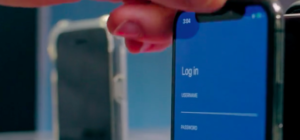Deploying a new healthcare technology, especially one that touches so many different roles and department(s) throughout a healthcare facility and/or an enterprise, can seem a bit overwhelming and scary at the same time. A successful deployment relies on months of due diligence to include gathering an inventory of current IS technologies that are being utilized within the existing facility, evaluating existing workflow and constraints to end-users, educating both leadership and end-users on a new product and building high-quality integrations.
Who Are the Key Go-Live Players?
At Mobile Heartbeat, every customer has access to a dedicated team of experts who guide and support them through the implementation process while offering expertise within the CC&C mobility space, insight and recommendations to assist with strategic workflow initiatives. Here are some of the Mobile Heartbeat team members who assist with the deployment process, starting with the project kickoff:
- Project Manager: The project manager leads the implementation process and act as the customer’s main point of contact for the facilitation of project scope, planning and is an ultimate resource to respond to any and all questions and requests from the customer.
- Implementation Consultant: The implementation consultant provides a valuable resource to complete a communication workflow assessment within each area of the facility to identify constraints and determine opportunities for optimization with streamlined processes by utilizing the application platform.
- Solution Engineer: The solutions engineer collaborates with the customer’s technology team to ensure deployment success within the healthcare organization’s infrastructure.
As a healthcare organization, it is also important to determine the appropriate resources (ie., project team members) that may be required for the deployment of the communication and collaboration platform. To note and highlight, this implementation is not just a technical project nor even a clinical project. It is, however, a project that highlights the beneficial unified approach of maximizing the operational and clinical staff workflows and efficiencies for patient care while also supporting the foundation and infrastructure guidelines that are required from the technical perspective. As such, key collaborative team members from both the clinical and technical facility resource field is highly encouraged. Examples include:
- Information Technology: IS Security, Telephony, Network (Wireless Admin), Server, Mobile Device Management, Active Directory Access Administrator and any Integration Analysts from Nurse Call, Telemetry, ADT/HL7, Device Integration, etc.
- Clinical Resources: Nursing and Physician representatives, Clinical Informatics Liaison, Facility Education and/or clinical training team as well as an Operational and/or Clinical Facility Champion that is very knowledgeable on the workflows and staffing within the facility.
The success of your clinical collaboration software deployment can also largely depend on the processes, organization and expertise of the vendor team as well. For instance, our professional services team members at Mobile Heartbeat provide resources and documentation outlining every step of the implementation process. We have a formula of Discovery, Build, Delivery and Validation. And, we specialize in listening to the customer, completing the diligence required to understand the facility culture, environment and workflow while also partnering with them to design a tailored platform that is unique to their individual needs.
As the project team works towards the targeted go-live date, here is what you can expect beginning approximately two months prior to go-live:
6-8 Weeks Before Go-Live
Although we begin discussing the go-live very early (as soon as the kick-off), dedicated strategic planning will usually begin around 6-8 weeks prior to the targeted go-live date. The team begins to solidify details surrounding the go-live to include resource availability, Command Center requirements, researching mitigation opportunities for any phased implementation approaches, preparing communication releases, etc.
Additionally, this is when training plans begin to formalize and class schedules are outlined to accommodate the facility’s end users. A goal for the project team is that a minimum of 80 percent of end-users are trained prior to the go-live date. Our team has found that most facilities that utilize the Train-the-Trainer methodology and approach have had the most success within their implementation.
We recommend and highly encourage facilities to designate employees who will be considered Master Trainers. They are trained by the Mobile Heartbeat personnel in every aspect of the platform, which provides invaluable resources and insight to then assist with training their facility super users as well as all other end-users within the organization. Our team also provides a host of training documentation that may be personalized to the facility and included within their learning management system, added to their resource library and circulated easily and efficiently via URL and/or QR codes, etc., for easy access by personnel.
4-6 Weeks Before Go-Live
Generally, the technical infrastructure is built and full integrated testing is in well underway at this stage of the implementation. The application software has been tailored to the needs of the organization and a thorough testing plan is being completed on the defined facility systems. As a part of the validation process, we will also utilize any testing results to fine-tune integrations and confirm that everything is functioning seamlessly, including telephony, admission, discharge and transfer (ADT/HL7) messages, nurse call and telemetry workflow initiatives prior to the go-live date.
The project team begins to finalize the specific schedule for the week of the go-live to include the specific scoped units and departments that will receive any dedicated on-site training and support. Most facilities choose to complete a big-bang roll-out approach and a coordinated outline of time periods that resources will be within each area is highly advantageous in order for everyone to be prepared. The devised communication plan will be activated and information will begin to flow within all channels of the facility in anticipation for the go-live event. Any final command center details are confirmed and travel plans are secured for the Mobile Heartbeat team to be onsite to provide a dedicated support system for the project team and facility at large.
2-4 Weeks Before Go-Live
It’s all about the training at this point of the implementation plan—the training programs, including Master Trainers and Super Users, are wrapping up during this period. Any facility employees who have completed these trainings will be fully equipped to assist with end-user training as well as onboard and train any new users leading up to and through the go-live experience.
In addition, the Mobile Heartbeat Support Team is introduced to the project team and information regarding our 24/7 dedicated support infrastructure is outlined. The facility’s technical and dedicated platform analyst finalize any of their individualized training protocols and we also provide guidance surrounding the many analytic and administrative reporting features that our platform provides.
1 Week Before Go-Live
A week before go-live, our professional services team is busy preparing any final details, scheduling check-ins and making sure all questions are answered. The project team confirms any last-minute tweaks or changes to the go-live schedule and prepares any FAQs for both internal (the Mobile Heartbeat team) and with the customer project and administrative teams to address any final questions and/or concerns that either team may have.
We’re also coordinating internally to prepare the go-live as a celebration of all the hard work, team collaboration and achievements that the project team and their facility put into the implementation efforts as well as the end-users who scheduled time for their training to prepare for go-live.
Go-Live Mission Accomplished
Go-live is a celebration. Throughout the go-live, you can expect to see Mobile Heartbeat team members in their royal blue shirts rounding departments to provide hands-on elbow support, encouragement and additional training where needed. Between our onsite Go-Live Command Center and home-base team providing remote support, there can be more than a dozen dedicated Mobile Heartbeat team members working to ensure the success of the deployment.
As a part of the communication plan, the team will also build and customize go-live dashboards to collect usage data in real-time. In addition, we develop and utilize an issue tracker to manage and resolve any help desk tickets that may come into the Command Center during the deployment and go-live window. The team also utilize these dashboards to help the facility measure their success of the go-live experience with the adoption and engagement of the new technology with new users. This provides the project team immediate insight into their deployment, implementation and utilization of the product. And the reporting features do not end there—once go-live is concluded, these dashboards remain available for the project team, platform analyst and the administrative team to access and pull any additional usage reports as desired.
Getting to go-live is a massive accomplishment and our professional services team makes every effort to treat deployment like the celebration it should be. From kicking off a new facility deployment through significant integration builds, communication and clinical workflow assessments, user training and going live, our team is there every step of the way to offer support, expert guidance and any resources your team needs to ensure a smooth transition to unified collaboration. But, the journey does not end there…. Our dedicated team is always available to continue to support the facility to engage and collaborate on any future optimization opportunities that may arise as they continue to grow, develop and succeed within their CC&C platform.
For more information on the deployment process, download our free Implementation Guide, or contact our clinical mobility team.



